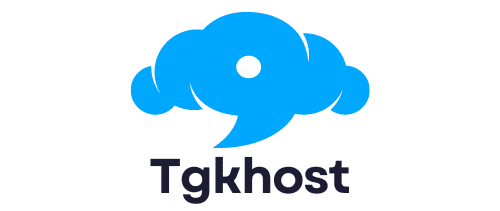How can you use Python to automate social media posting across multiple platforms?

As a result of the vast influence of social media in our current era, it's no secret that platforms like Instagram, Twitter, and Facebook play an integral role in digital marketing strategies. However, managing these platforms can often be time-consuming. One solution is automation.
Through the use of Python - an easy-to-use, highly versatile programming language - you can automate your social media posts across various platforms, freeing up valuable time and boosting your marketing efforts. To harness Python's power effectively, you need to understand how to use it to interact with social media APIs, how to schedule posts, and how to manipulate data effectively.
A lire également : How do you implement a secure OAuth 2.0 authentication flow in a Flutter application?
Using APIs to Interact With Social Media Platforms
APIs, or Application Programming Interfaces, are used by various web services, including social media platforms, to allow third-party applications to interact with their data. They act as a bridge between different software applications, allowing them to communicate and share data.
Facebook, Instagram, and Twitter all provide APIs that can be accessed using Python, allowing you to automate tasks such as posting content or analyzing social media data. However, to use these APIs, you need to obtain an access token, which verifies your identity and permissions.
En parallèle : What are the best practices for using AWS Secrets Manager to manage API keys?
Python provides libraries such as tweepy for Twitter, python-facebook-api for Facebook, and instabot for Instagram, which simplify the process of interacting with these APIs.
To use these libraries, you install them using the pip installer, import them into your Python script, and then use them to authenticate with the social media platform using your access token. Once authenticated, you can use the library's functions to interact with the platform, such as creating posts or retrieving data.
Automating Social Media Posts
Python's libraries provide functions that you can use to create, schedule, and post content on social media platforms. For example, with tweepy, you can use the update_status() function to post a tweet. Likewise, python-facebook-api provides the put_wall_post() function for posting on Facebook, and instabot offers the upload_photo() function for Instagram.
To automate the posting process, you can create a Python script that reads post content from an external source such as a CSV file, creates posts using the appropriate function, and then schedules these posts to be published at specific times.
To schedule posts, you can use Python's built-in time function to pause the script for a specified number of seconds. Alternatively, you can use more advanced scheduling libraries like schedule or APScheduler, which allow you to schedule tasks to be executed at specific times or intervals.
Gathering and Analyzing Social Media Data
Python's social media libraries also allow you to gather and analyze social media data. For example, you can use tweepy to retrieve tweets containing a specific hashtag, python-facebook-api to fetch posts from a Facebook page, or instabot to gather data about Instagram posts.
Once you have gathered the data, you can use Python's data processing libraries like pandas and numpy to analyze it. For example, you could analyze the times at which users are most active, the types of content they engage with most, or the sentiment of their comments.
By analyzing this data, you can gain valuable insights that inform your marketing strategy, allowing you to create more engaging content, target your audience more effectively, and measure the success of your marketing efforts.
Handling URLs and Web Requests
When working with social media APIs, you often need to handle URLs and web requests. Python provides the requests library for this purpose.
Using requests, you can send HTTP requests to a URL, such as GET requests to retrieve data or POST requests to submit data. The library also provides functions for handling the response from these requests, such as parsing JSON data or handling HTTP errors.
In the context of social media automation, you can use requests to send posts to a social media platform, or to fetch data from the platform.
Managing Multiple Social Media Platforms
To manage multiple social media platforms simultaneously, you can create a Python script that interacts with multiple APIs.
This script could read post content from an external source, use the appropriate library to post this content on each platform, and then schedule these posts using a scheduling library. By using this approach, you can manage multiple platforms from a single script, maximizing your efficiency and consistency.
Overall, Python offers powerful tools for social media automation, allowing you to optimize your marketing strategy, save time, and gain valuable insights. However, it's important to use these tools responsibly, respecting the platforms' terms of service and the privacy of users.
Web Scraping with Python for Social Media Campaigns
Web scraping is a method used to extract large amounts of data from websites. In the context of social media, web scraping can be used to gather data on user behavior, popular content, and emerging trends. This information can be incredibly valuable when shaping your digital marketing strategy.
Python offers several libraries for web scraping, including beautifulsoup4, scrapy, and requests. These libraries allow you to send HTTP requests to a URL, parse the HTML response, and extract the data you need. For example, you could use beautifulsoup4 to scrape a Twitter hashtag and analyze the most popular tweets.
When web scraping, you often need to deal with web requests. Python's requests library is a simple yet powerful tool for sending HTTP requests. It allows you to send GET requests to retrieve data, POST requests to submit data, and handle the response from these requests.
To use requests, you first need to import it into your Python script. You then use the get() function to send a GET request to a URL, passing the URL as a parameter. The function returns a response object, which you can query for the status code, headers, and content.
For example, you could use requests to send a GET request to the Twitter API, fetch recent tweets containing a specific hashtag, and then analyze these tweets to understand user sentiment.
On a final note, it is essential to remember to be respectful when web scraping. Always follow the website's terms of service, and do not scrape data at a rate that could overload or damage the server.
In conclusion, Python is a powerful tool for automating social media tasks across multiple platforms. By using Python's libraries and APIs, you can automate social media posts, gather and analyze social media data, handle URLs and web requests, and even conduct web scraping.
This automation can help you to optimize your social media strategy, allowing you to post content at the most effective times, engage with your audience more effectively, and understand user behavior and trends. Not to mention, it can save time and resources, freeing you up to focus on other aspects of your digital marketing.
However, it's crucial to remember to use these tools ethically. Always comply with the terms of service of the media platforms you are using, respect user privacy, and use the data you gather responsibly.
By following these guidelines and harnessing the power of Python automation, you can maximize the effectiveness of your social media campaigns and ultimately achieve your marketing goals. It's clear that the future of digital marketing lies in automation, and Python is leading the way.
